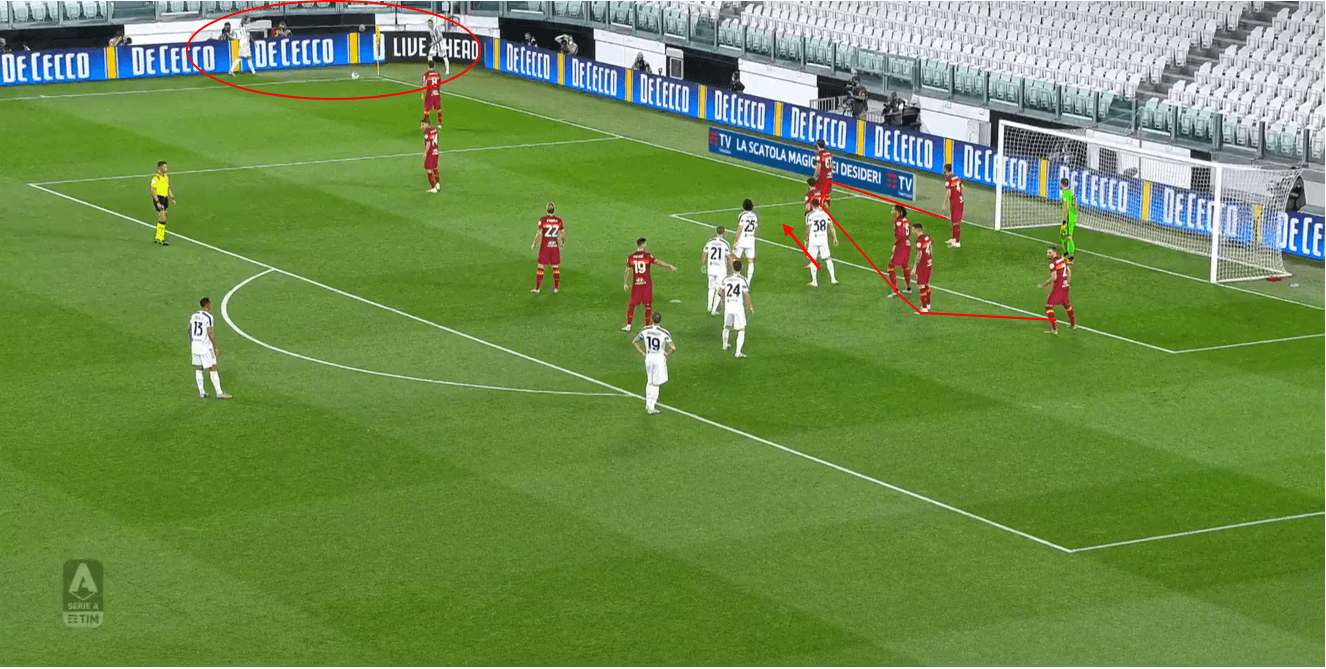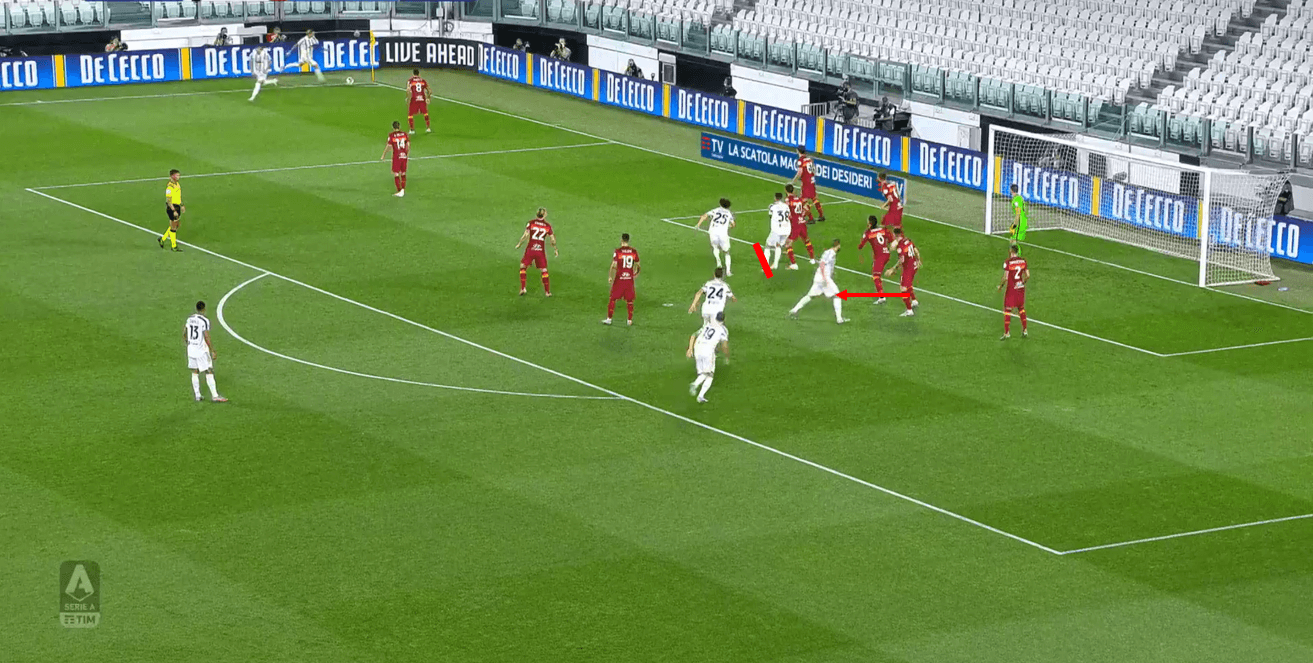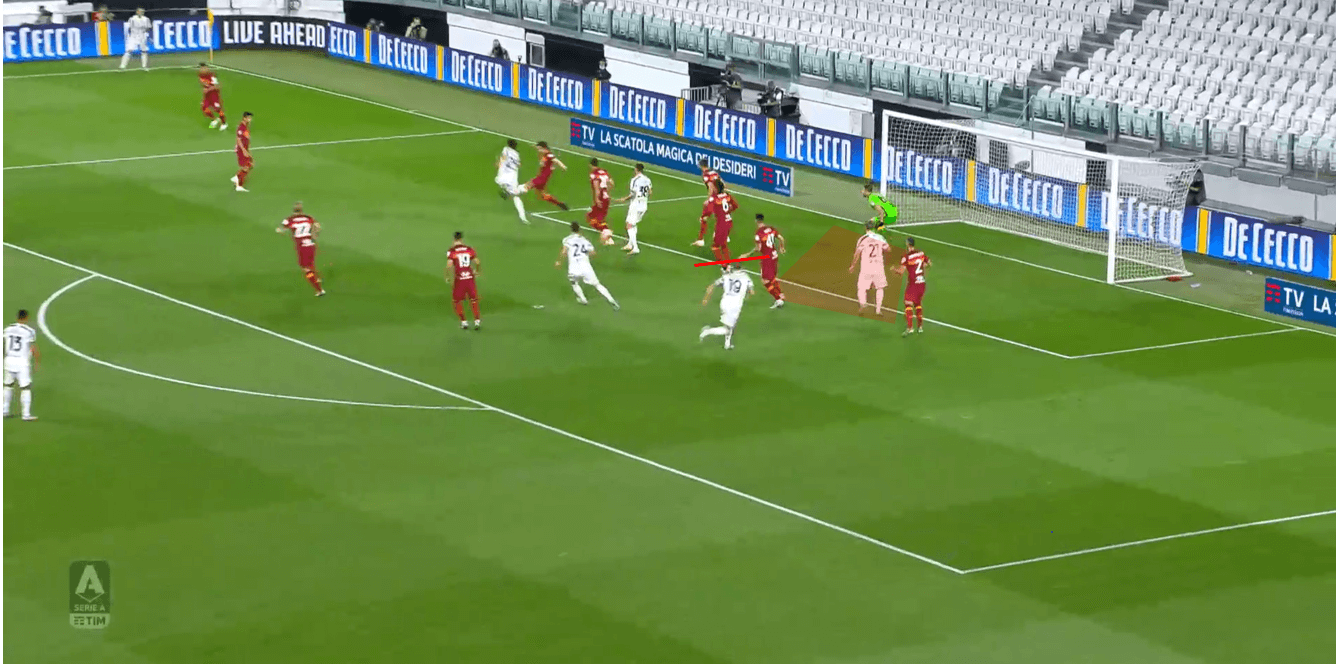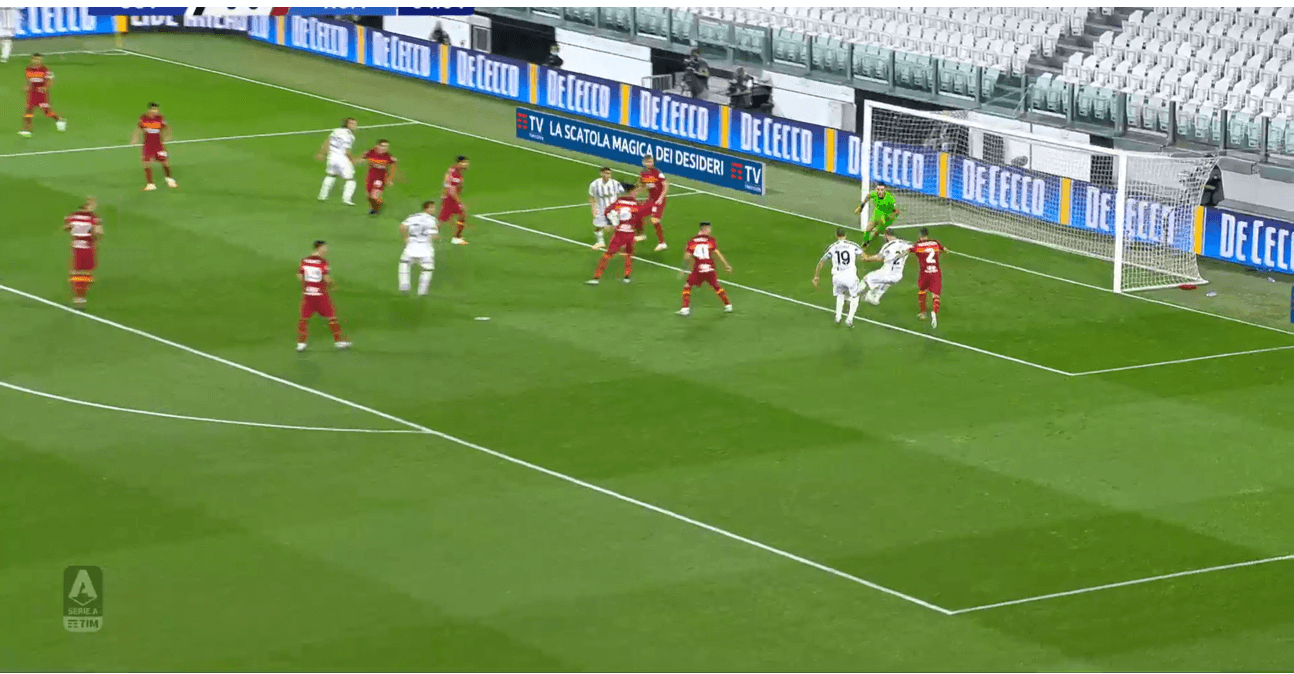This week our set-piece example comes from Italy, with Roma continuing to struggle from corners with their very zonally orientated system. This time it’s Juventus who take advantage, a team who have performed well from set-pieces recently.
We can see Roma start in a six-man zonal structure, with a player covering the inside lane towards the goalkeeper, as well as a player on the near edge of the six-yard box and another player to his left. That’s three players based around the near post area, while three others mark the central and back post zone. They position two players towards the edge of the box, and so they don’t have any blockers or man markers at all. This allows Juventus to gain dynamic superiority over Roma’s static zonal markers.
Juventus position themselves in more of an overload towards the near post, and also commit two players to take the corner. This is used to try and affect the height of the Roma line, as the depth of the zonal markers changes depending on an inswinging or outswinging delivery. As it turns out, it is an outswinger, and so Roma end up too deep. Juventus commit a player towards the near post zonal markers.

One near post player moves onto the edge of the box near side zonal marker, and acts as a blocker, while the other runs deeper just behind this player. The blocker prevents this zonal marker from being able to occupy his space effectively, and so Rabiot is able to get first contact just on the edge of the six-yard box. Roma based their shape on it being an inswinging corner, and so a deeper delivery by Juventus means Roma’s zonal players can’t push out high enough.
As the ball is floated in, we see the far central zonal marker starts to push out slightly, almost just being sucked towards the ball a touch. Gonzalo Higuaín moves towards the goal.

Juventus win the first contact, and Rabiot flicks the ball on towards the back post. Higuaín continues his run, while the Roma zonal player has pushed forward slightly, leaving a space behind him and passing lanes either side of him. The back post occupier can’t react to close the space quickly and get goal side.

As a result, Higuaín is able to score a tap in at the back post. We can see he is played onside by the original deepest Roma zonal marker, and so the two corner takers have helped to enable first contact and to keep Roma deeper and playing them onside.

It is a very well-worked set-piece against a dubious Roma set up, with this example showing how to attack zonal systems and the effect delivery type has on the opposition structure. Stay tuned for a full analysis of Roma’s set up.





Comments